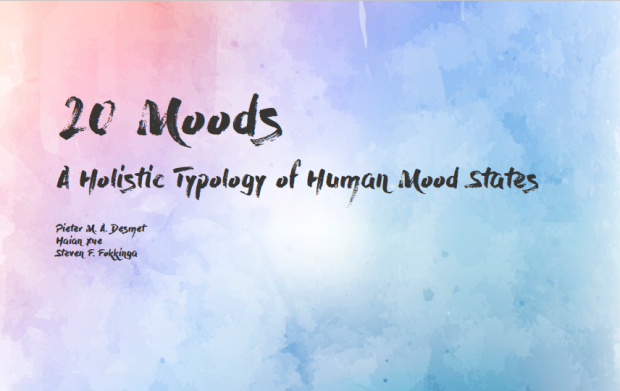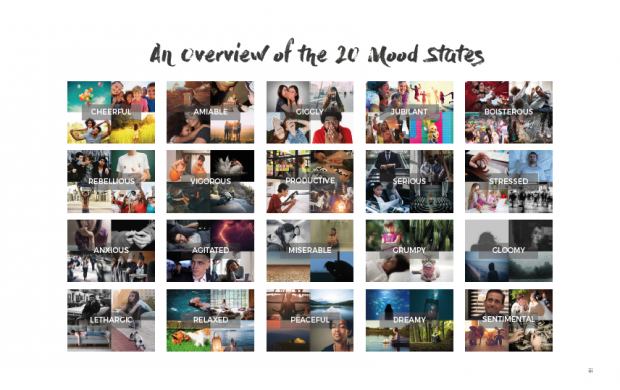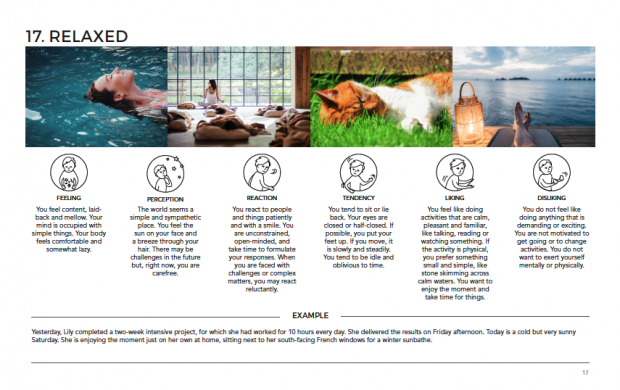Introduction
Designers have been long fascinated and inspired by the phenomenon of human mood. Nevertheless, a barrier that has been preventing them from adequately leveraging relevant opportunities is the current low-granular understanding of the mood phenomenon. Compared to emotion, mood is more difficult to capture and communicate because of its pervasive and elusive nature. Consequently, moods are often communicated with general descriptions, such as ‘I feel good today’, or ‘I am not in the mood’. Real-life moods are much more differentiated than what the inexplicit ‘good or bad’ accounts represent.
The booklet, ‘Twenty moods: Holistic typology of human mood states’ is a mood-focused design tool that offers design professionals with a fine-grained overview, a rich vocabulary, and pictorial descriptions of user mood states. Design researchers may use the typology as a resource for their user mood-related research explorations. Designers may use this typology to enhance their mood granularity, and take it as a source of inspirations for unique mood-focused design innovations.
This holistic mood typology is an open and evolving platform for the exploration of mood granularity for design research and practice. Previous versions can be obtained upon request.



Typology development
The holistic mood typology was generated by combining the results of two studies. The first study combined a lexical analysis and researcher introspections. Three researchers examined 135 mood words found in the literature, which resulted in an initial typology of 18 mood states and corresponding descriptions. The second study was a phenomenological inquiry that validated and enriched the initial typology. A two-week mood diary study with a group of nine co-researchers generated 159 introspective mood samples. The inquiry resulted in the final typology of 20 mood states and refined descriptions. The details of the typology development can be found in the following paper:
Image selection
The 80 images in this booklet were selected with a two-staged procedure. The first step was to select a broad collection of 200 images from online image databases. Next, a questionnaire study (N = 66) determined the degree to which each of the 200 images expresses the target mood. Respondents rated each image for the degree to which it is a good representation of the target mood. The final image collection was selected from those images that were found to be good representations. The details of the selection procedure can be found in the following report:
Availability
We believe in open-access research, so you can download the booklet here: Downloadable PDF.
The Twenty Moods booklet is published under an Attribution-NonCommercial-NoDerivatives 4.0 International Creative Commons licence (CC BY-NC-ND 4.0). This means that you are free to share the booklet for non-commercial purposes as long as you give appropriate credit, provide a link to the license, and do not modify the original material. For licence details, see: https://creativecommons.org/licenses/by-nc-nd/4.0/.
Citation
Desmet, P.M.A., Xue, H., & Fokkinga, S.F. (2020). Twenty moods: Holistic typology of human mood states (first edition). Delft: Delft University of Technology. ISBN: 978-94-6384-013-2



